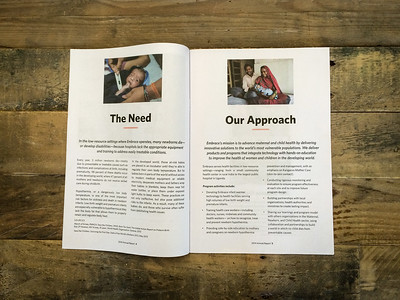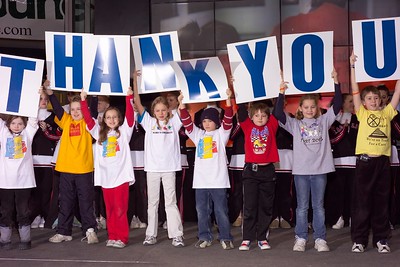In most instances, nonprofit giving declined again in 2023. If you’re interested in the numbers, here are the latest results from M + R Benchmarks.
If your giving has gone down, you may have cut back on some expenses. While that’s understandable on one level, you need to be careful before you nix something you think you can’t afford. It may be something you should be investing in.
Instead of going on autopilot and saying “We can’t afford this,” think about how you can make wise investments. Stay away from the scarcity mindset. It’s often not helpful.
Here are a few areas you should be investing more money in. The good news is if you do it well, these investments can help you raise more money.
Invest in a good CRM/database
Plain and simple, a good CRM (customer relationship management)/database can help you raise more money. You can segment your donors by giving amount and politely ask them to give a little more in your next appeal – $35 or $50 instead of $25. Many organizations don’t ask their donors to upgrade their gifts and you’re leaving money on the table when you neglect to do this.
A good database can help you with retention, which will save you money since it costs less to keep donors than to acquire new ones. Donor retention continues to be a huge problem.
Many CRMs have built-in payment processors. If not, invest in a good one.
Your CRM will let you personalize your letters and email messages. Make sure to invest in a good email service provider, too. Personalized letters and messages mean you can address your donors by name and not Dear Friend. You can welcome new donors and thank current donors for their previous support. You can send targeted mailings to lapsed donors to try to woo them back. You can send special mailings to your monthly donors. You can record any personal information, such as conversations you had with a donor and their areas of interest.
In short, you can do a lot with a good CRM/database. Invest in the best one you can afford, and Excel is not a database.
If you’re worried about spending $50 to $100 a month on a CRM/database, you may be able to recoup that expense if you can ask for an upgrade and personalize your communication.
Invest in direct mail
You may not use direct mail that much, especially over the last few years. Some organizations were never or rarely using it before the pandemic.
If that’s the case for you, you’re missing out on an effective and more personal way to communicate with your donors. Think of the enormous amount of email and social media posts you receive as opposed to postal mail. Your donors will be more likely to see your messages if you send them by mail.
Yes, direct mail is more expensive, but you don’t have to mail that often. Quality is more important than quantity but aim for at least three or four times a year, and don’t just send fundraising appeals.
Give some thought to what you send. Some ideas, besides appeal letters, include thank you letters/cards; Thanksgiving, holiday, and/or Valentine’s Day cards; infographic postcards; two-to-four-page newsletters; and impact reports. You could put a donation envelope in your newsletter to raise some additional revenue, but do not put one in a thank you or holiday card. I wouldn’t recommend putting one in an impact report either, especially if you only do one a year.
Shorter is better. Lengthy communication will cost more and your donors are less likely to read it.
A few ways you can use direct mail without breaking your budget are to clean up your mailing lists to avoid costly duplicate mailings, spread thank you mailings throughout the year – perhaps sending something to a small number of donors each month, and look into special nonprofit mailing rates. You may also be able to get print materials done pro bono or do them in-house, as long as they look professional.
Of course, you can use email, but your primary reason for communicating that way shouldn’t be because it’s cheaper. Both direct mail and email have their place, but in many cases, direct mail is more effective. They also work well when you use them together.
Invest in monthly giving
If you don’t have a robust monthly giving program, you’re missing out on a great way to raise more money. Monthly giving is one of the few types of fundraising that saw an increase last year. It’s good for all nonprofit organizations, but it’s especially beneficial for small nonprofits.
All it takes is for someone to start giving $5.00 or $10.00 a month (hopefully more). These small gifts add up. Also, the retention rate for monthly donors is around 90%. Plus, they’re more likely to become mid-level, major, and legacy donors.
This is why having a good CRM is so important. It will help you find potential monthly donors and segment your current monthly donors so you can send them specialized donor communications.
Don’t wait any longer to invest in this proven way to raise more money. If you already have a strong monthly giving program (kudos to you), take the next step and invest in mid-level donors and so on.
Invest in donor communications
By donor communications I mean thank you letters/notes, newsletters, and other updates. Some organizations don’t prioritize these and want to spend their time “raising money.” They don’t seem to realize they can raise more money with better donor communications. Remember this formula – ask, thank, report, repeat.
Don’t skimp on your communications budget. Creating thank you cards and infographic postcards is a good investment and a necessity, not a luxury. Thank you cards are a much better investment than mailing labels and other useless swag.
Maybe you need to reallocate your budget to cover some of these expenses. You could also look into additional sources of unrestricted funding.
Of course, you can also use email and social media to communicate with donors. This reiterates the need for a good email service provider with professional looking templates for your email newsletter and other updates.
Invest in infrastrucure
We need to stop treating overhead or infrastructure as something negative. Most individual donors don’t care about overhead, anyway. However, some funders want us to spend our budget on programs, but how can we successfully run our programs if we don’t have enough staff and can barely afford to pay the people we do have? A rotating door of development staff makes it hard to maintain those important relationships. We also have to pay rent and other expenses (including a CRM, direct mail communication, etc.).
Until these funders stop worrying so much about overhead, you may want to invest some time in finding unrestricted funding sources – often those important individual gifts, such as monthly donations and mid-level/major gifts.
Don’t limit yourself by saying you can’t afford certain expenses. If you make wise investments, you should be able to raise more money.










